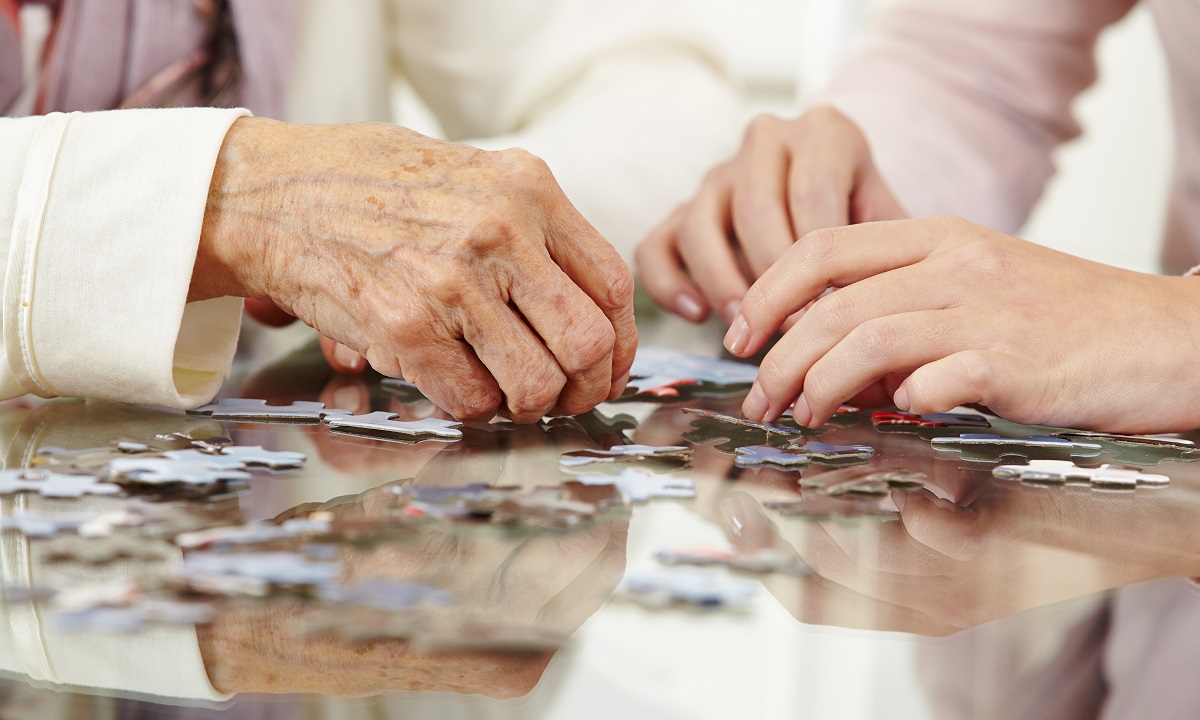Dementia affects a person’s ability to make sense of the world around them causing feelings of insecurity and anxiety. It’s important to support and encourage a person diagnosed with dementia to continue with everyday activities as fully as possible, and to stay connected with friends and family.
Dementia affects memory, perception and judgement, posing everyday challenges for a person living with dementia. Minimising risks and taking positive steps to promote independence and autonomy will enable a person with dementia to live well and with purpose and meaning for longer.
The majority of people with dementia live at home, either with their family or on their own. In either case, safety is a prime concern. There are many ways in which the home environment can be adapted to maximise a person’s ability to live safely with dementia.
Physical environment
Difficulties with spatial awareness and visual perception are common for people living with dementia and these symptoms can be hazardous for a person in the home environment. It might be difficult for a person to see or judge where objects are; they might struggle to distinguish doorways, stairs, cupboard handles; and resist stepping on patterned carpets or shiny floors.
It’s important to keep open areas clear of obstacles and surfaces tidy. Dementia can disrupt a person’s ability to make sense of space and distance, making it difficult to judge precisely where an object is; examples of problems that might be encountered include, walking into furniture, colliding with a door, misjudging the position of a mug and knocking it over. Whilst it will be impossible to avoid all mishaps, minimising risk makes life less stressful for the person with dementia and the family carer.
It might be useful for a person with dementia to have reminders and prompts in living spaces, for example notes on cupboards to identify what is inside, a sign on the toilet so that it is easy to find when needed, instructions on gadgets making them simpler to use. Signs and identifiers could be written (in large clear lettering) for people who can still read words, or images could be used for people who struggle with or can no longer understand words. This will be induvial to the person since there are many types of dementia and each person will be affected differently.
Subtle colour differences are hard to detect for a person with dementia. Having high colour contrast helps a person navigate their way effectively around the home environment. For example, having a brightly colour toilet seat in a plain primary colour (red or blue) helps a person to distinguish where the toilet is and how to use it; painted door frames in a contrasting colour to the door makes the doorway easier to identify; using plain (not patterned) coloured plates and bowls enables a person to see their food more easily.
These are small things that can make a big difference to a person’s everyday experience, reducing stress and agitation and creating a calm and peaceful atmosphere.
Emotional wellbeing and meaningful activity
As well as keeping physically safe at home, it’s important that a person living with dementia feels emotionally secure and well supported. Constantly experiencing an unfamiliar world (as it will seem to a person with dementia) is unsettling and confusing. Initiatives that enhance connections with the person’s life history and social relationships create meaning and reinforce identity.
Memory boxes and life story books are useful ways to reconstruct someone’s life when their memories are fading. Photographs of family members and significant memorabilia, such as wedding invitations, anniversary cards, are conversation starters and help family members and carers to engage positively with the person, sometimes eliciting memories, sometimes simply providing a focus for enjoyable interaction.
Language capabilities are affected by dementia. As a person’s condition worsens, their ability to read and speak words diminishes. The nature of progression differs from person to person: it may be that images are easier to understand. It’s important to experiment to find out what works best for each person and for different situations; and if you find a solution that seems perfect for your relative, it’s important to understand that it might only work for a while. Dementia is progressive, inevitably there will be a new challenge around the corner. Carers are the best detectives: new approaches and solutions are constantly required. Family members are in the best position to figure out what works. Sometimes very tiny changes in a routine or daily schedule can help turn a problem around.
Whilst cognitive abilities decline over time, emotional functioning remains intact for much longer. People with dementia experience feelings in much the same way as all of us do. Some types of dementia disrupt ‘normal’ emotional processes, particularly when the frontal lobes of the brain are affected; but for people with, for example, Alzheimer’s or Vascular Dementia, and upsetting situation prompts an appropriate emotional response.
Making the home environment as stress-free as possible is important for the wellbeing of person with dementia, minimising the risk of anxiety and/or fear and/or angry behaviour. Notice what triggers your relative and takes steps to avoid situations that are likely to prompt an unwelcome emotional response. When language and understanding eludes a person with dementia, their behaviour is their way of communicating. Finding the world around them bewildering, when they are faced with a perceived threat or danger, they are likely to respond with a ‘flight’ or ‘fight’ response. Understanding why these perplexing behaviours occur is the key to avoiding situations that will activate them.
If you would like to talk to me about your relative’s wellbeing or have concerns about behaviours or safety in the home, please do get in touch barbara@liftedcare.com
SHARE
Explore more




